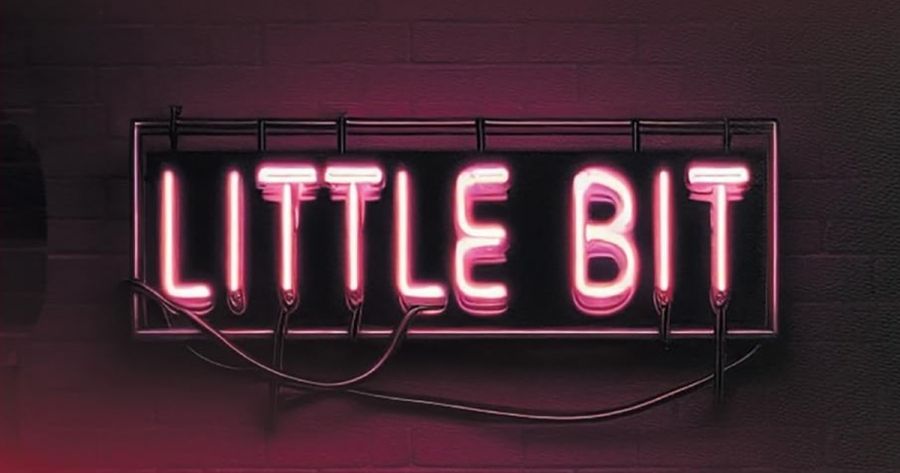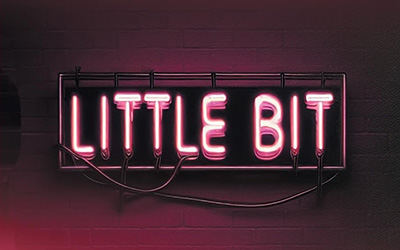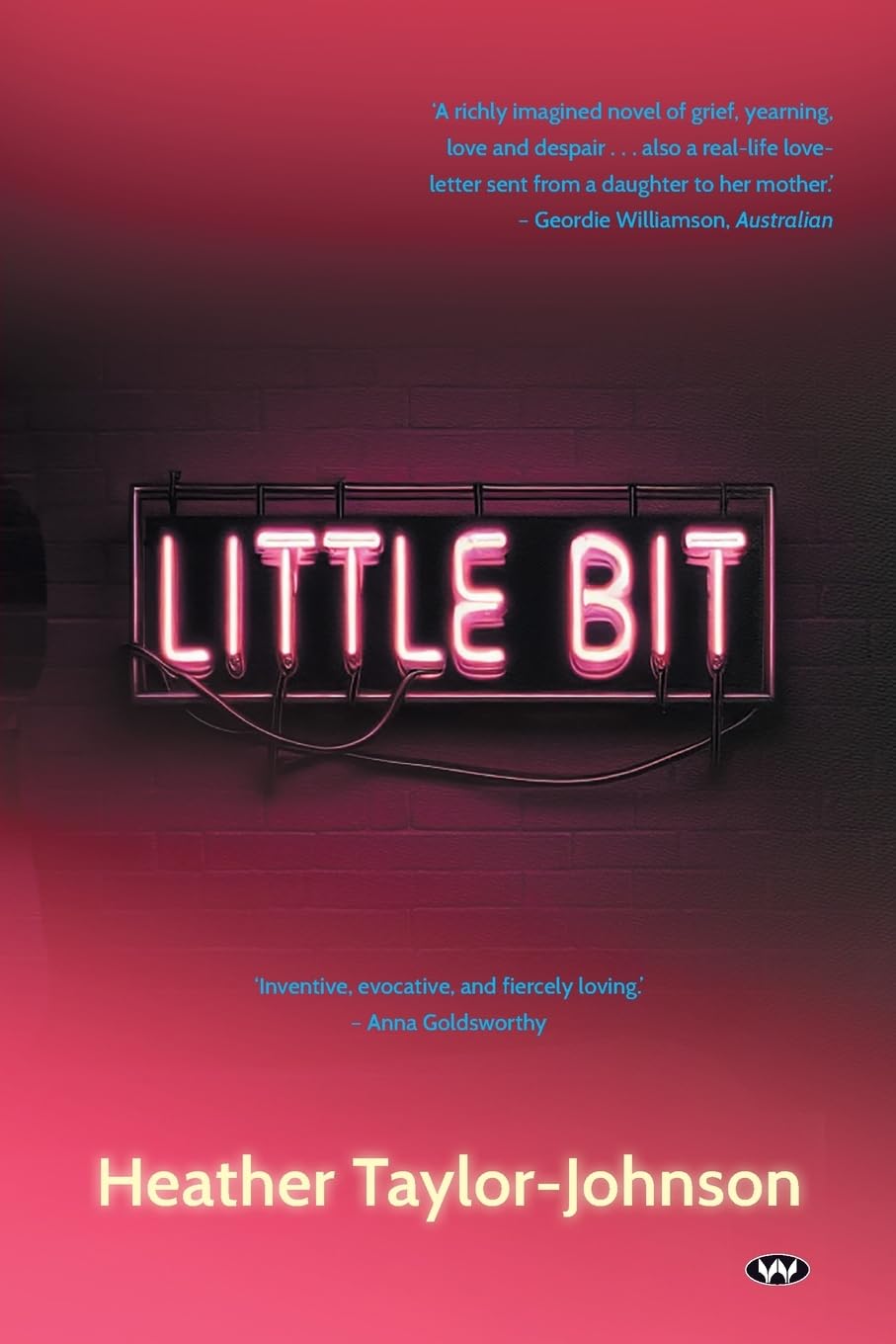
- Free Article: No
- Contents Category: Fiction
- Review Article: Yes
- Article Title: Dutiful daughter
- Article Subtitle: Wrestling with inherited memories
- Online Only: No
- Custom Highlight Text:
In the cover of Little Bit, a hot-pink neon sign points the way to the dive bars and deprivation within, priming the reader for a certain type of story. Think Natassja Kinski as Jane in her pink peepshow sweater in Paris, Texas. It’s going to be a book about good women, bad men, cheap sex, crime, alcohol, and trouble.
- Featured Image (400px * 250px):

- Alt Tag (Featured Image): Tracy Ellis reviews ‘Little Bit’ by Heather Taylor-Johnson
- Book 1 Title: Little Bit
- Book 1 Biblio: Wakefield Press, $32.95 pb, 323 pp
- Book 1 Cover Small (400 x 600):

- Book 1 Cover (800 x 1200):

- Book 1 Readings Link: https://www.readings.com.au/product/9781923042537/little-bit--heather-taylor-johnson--2024--9781923042537#rac:jokjjzr6ly9m
Little Bit is not just the story of Debbie and Stella. It is a hybrid novel that flips between three narratives, three distinct voices, three generations – grandmother Stella, mother Debbie, and daughter Heather, the author herself. Taylor-Johnson takes a different approach to each character: fiction for Stella, whose life she can only imagine; memoir for her mother, still very much alive, her story compiled from a series of voice recordings; and autofiction for the author, whose narrative, written in the third person, gives the book an experimental edge. These chapters provide some light relief, as Heather’s story centres around her more relaxed and privileged experiences as an adult raised and cared for with love by Debbie. The book finds Heather travelling from her home in Adelaide to an artists’ residency at the Anderson Center in Red Wing, Minnesota. Here she patiently ponders the structure of her book and how to approach it – whether it will be fiction or nonfiction, or whether it matters – all the while in close proximity to where her mother grew up in Minneapolis, but far from it in every other sense.
Taylor-Johnson has a strong and loving relationship with her mother and there is no sign of tension between them, which is strange for mother-daughter relationships, at least those that make it into books. She describes her mother as ‘a present, wrapped and wrapped and wrapped’, and seems motivated to document her story and honour her courage and survival. But no writing of a book can be sustained by altruism alone. Taylor-Johnson sheds her own tears as she wrestles with the text. ‘Whose book is this?’ she asks. As loving a mother as Debbie might have been, children absorb trauma and she cannot separate herself entirely from her mother’s experience. ‘We borrow our mother’s memories to better understand ourselves,’ she writes.
About her grandmother, Taylor-Johnson, writing as herself in the third person, says that she ‘wants to believe the woman cared’, and attempts to get inside Stella’s mind. She walks through the sorry scenes as Stella, looking through drunken eyes at Debbie’s childhood humiliation and bearing witness to the fallout of her own inability to nurture, love, or look after her only daughter, and imagines her as a young mother, tired, overwhelmed, and still expected to service her husband sexually at night, intimidated by his potential for violence. Writing as Stella, Taylor-Johnson appears to uncover the impotence behind Stella’s seeming indifference and lack of remorse, the helpless self-absorption of the heavily addicted. She at least dips her hat to the way women were curtailed by mid-century shame and expectations, or derailed by the demands of marriage and motherhood; their potential diminished, their lives reduced.
Although Stella remains the villain of the story until her undignified end, the root cause of her dysfunction is a man – Stella’s father, who sexually abused her: ‘He didn’t love me; he loved me too much,’ she says. Here, Taylor-Johnson executes an unflinching depiction of incest with writing that is direct and steady, reminiscent of Mary Karr’s The Liar’s Club. It is in passages such as these that the author is at her most powerful, when she leaves her characters alone on the page to tell the story.
Taylor-Johnson is an accomplished writer, poet, and academic, and there is a confidence in her choice to move between styles. She is comfortable relying on the reader to keep up with the who, when, and where of the three separate narratives – Stella, Debbie, Heather; Minneapolis, Florida, Australia – but as the narrative moves back and forth between the three women, the effort feels a bit like disassembling and reassembling a Russian doll.
Debbie’s story could have filled the book on its own, with suspense and drama on every page, with little need for embellishment. In plain reportage it would still be a sweeping saga that sees her fall under the mentorship of a kindly piano teacher and lose a first love to war in Vietnam. She seems to be headed for disaster or a similar fate to Stella’s when she falls pregnant to a charming, wayward rebel, but her story has a surprise happy ending. It would have been potent delivered straight, like one of Stella’s drinks; despite the prevalence of such stories, each deserves to be told.
There is nothing so compelling as the potential danger faced by an abandoned child in the big city. It is a thread a reader could follow forever, turning the page to make sure that she is okay and willing her to make it – which, thankfully, she does, her daughter’s book a testament to her survival.


Comments powered by CComment